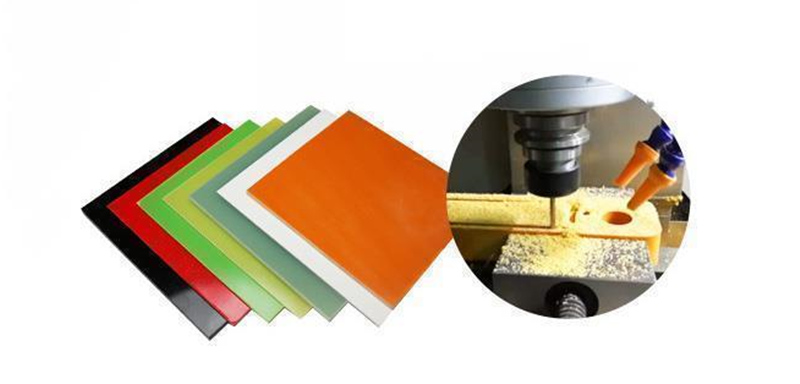The fr4 epoxy board is a code for the grade of flame-resistant material, which represents a material specification that the resin material must be able to extinguish itself after the burning state. Epoxy resins generally refer to organic polymer compounds containing two or more epoxy groups in the molecule. Except for a few, their relative molecular mass is not high. The molecular structure of epoxy resin is characterized by the active epoxy group in the molecular chain. The epoxy group can be located at the end, middle or in a cyclic structure of the molecular chain. Because the molecular structure contains active epoxy groups, they can undergo cross-linking reactions with various types of curing agents to form insoluble and infusible polymers with a three-way network structure.

The advantages of cnc machining fr4 epoxy board
1. Various forms: various resins, curing agents, and modifier systems can almost adapt to the requirements of various applications on the form, ranging from extremely low viscosity to high melting point solids.
2. Convenient curing: Choose a variety of different curing agents, and the epoxy resin system can be cured at a temperature range of 0~180℃.
3. Strong adhesion: The inherent polar hydroxyl and ether bonds in the molecular chain of epoxy resin make it have high adhesion to various substances, low shrinkage during curing, and small internal stress. , Which also helps to improve adhesion strength.
4. Low shrinkage: The reaction between epoxy resin and curing agent is carried out by direct addition reaction or ring-opening polymerization reaction of epoxy groups in resin molecules, and no water or other volatile by-products are released. Compared with unsaturated polyester resin and phenolic resin, they show very low shrinkage (less than 2%) during curing.
5. Mechanical properties: The cured epoxy resin system has excellent mechanical properties.
6. Appearance: Appearance includes surface finish and color. China’s traditional standards and current standards have no color regulations, that is, they are all natural colors. Some national standards allow several prescribed colors. These colors are obtained by adding colorants Because any colorant has a negative impact on the performance of the board, considering the specific application of the insulating board, natural color should be better; in the relevant production process, stainless steel equipment is used to make the light Color products, such as the use of ordinary carbon steel equipment, the color of the product becomes darker; in addition, the color will become darker with the extension of storage time, so the color of the plate seen on different occasions is diverse.
Get your CNC machining FR4 projects started today
When you send out 3D CAD documents to us, JY Machinery will provide you with instant price, on-demand delivery time, as well as design for manufacturability comments for your customized CNC machining components on materials and also producing process, to make sure that the component can meet your expectations as well as budget plan demands.
Get in touch with us today for a free quote!
Skype: Chat on Skype
Email: info@jycncmachining.com
Phone: +86 15905915652
评论
发表评论